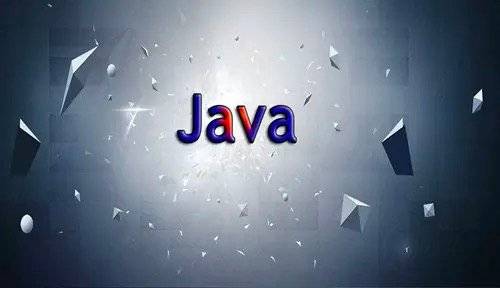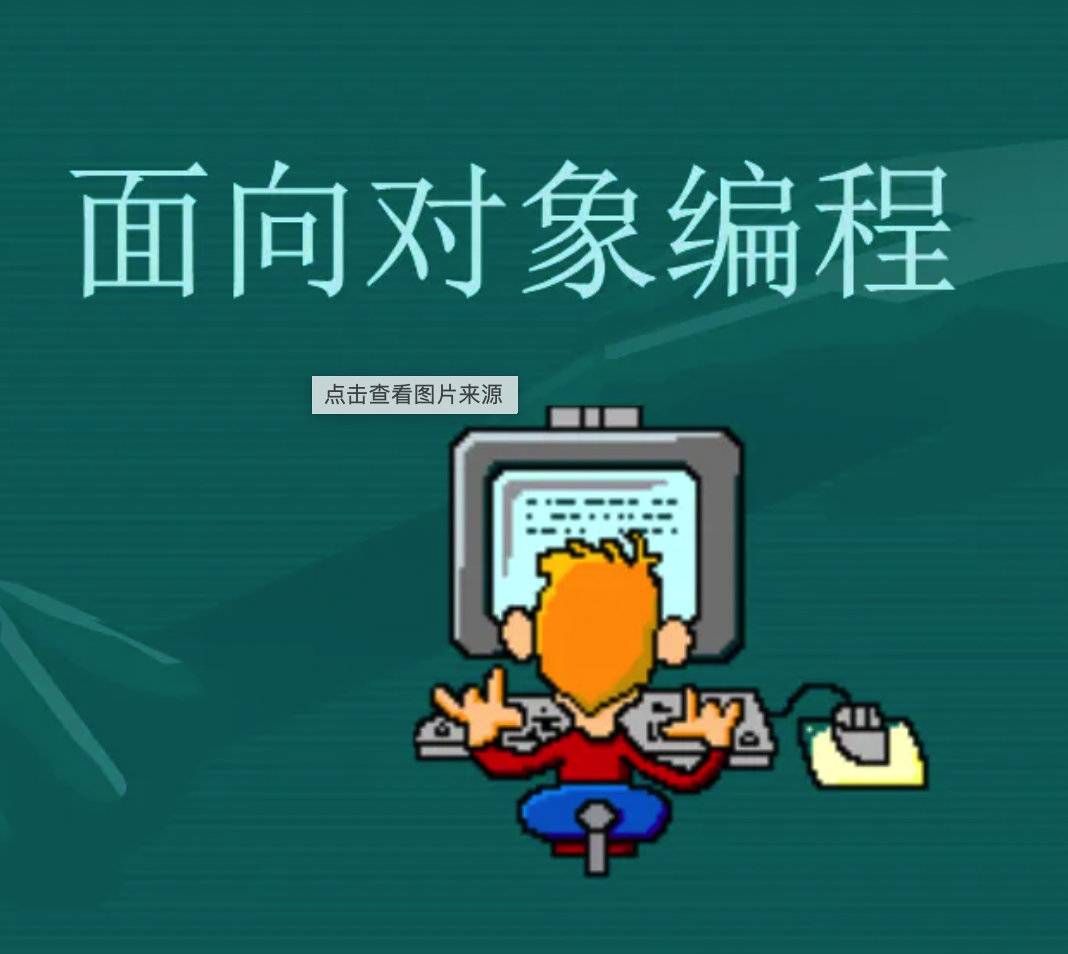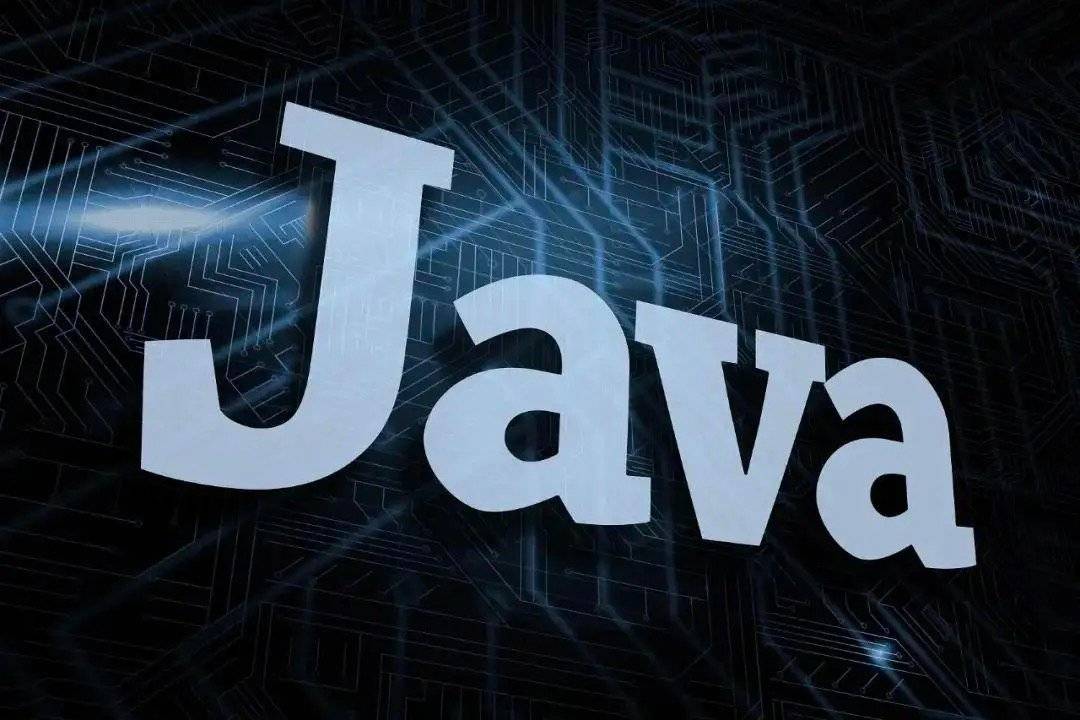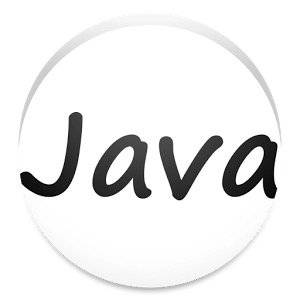L10-IO
File类
概述
- java.io.File类:文件和目录路径名的抽象表示形式,与平台无关
- File 能新建、删除、重命名文件和目录,但 File 不能访问文件内容本身。如果需要访问文件内容本身,则需要使用输入/输出流
- File对象可以作为参数传递给流的构造函数
常见的构造方法
public File(String pathname):以pathname为路径创建File对象,可以是绝对路径或者相对路径,如果pathname是相对路径,则默认的当前路径在系统属性user.dir中存储public File(String parent,String child):以parent为父路径,child为子路径创建File对象
File的静态属性String separator存储了当前系统的路径分隔符。在UNIX中,此字段为‘/’,在Windows中,为‘\’
常见的方法
访问文件名
getName()getPath()getAbsoluteFile()getAbsolutePath()getParent()renameTo(File newName)file1.renameTo(file2):要求:file1一定存在,file2一定不存在
文件检测
exists()canWrite()canRead()isFile()isDirectory()
获取常规文件信息
lastModified():最近修改时间length()
文件操作相关
createNewFile()delete()
目录操作相关
mkDir():创建一个文件目录。只有在上层文件目录存在的情况下,才能返回truemkDirs():创建一个文件目录,若上层文件目录不存在,就一并创建list():以字符串数组返回listFiles():以文件对象返回
Java IO
概述
IO流用来处理设备之间的数据传输。Java程序中,对于数据的输入/输出操作以”流(stream)” 的方式进行。java.io包下提供了各种“流”类和接口,用以获取不同种类的数据,并通过标准的方法输入或输出数据。
- 输入input:读取外部数据(磁盘、光盘等存储设备的数据)到程序(内存)中
- 输出output:将程序(内存)数据输出到磁盘、光盘等存储设备中

流的分类

- 按操作数据单位不同分为:字节流(8 bit),字符流(16 bit)
- 按数据流的流向不同分为:输入流,输出流
- 按流的角色的不同分为:节点流,处理流
补充:节点流和处理流
- 节点流可以从一个特定的数据源读写数据

- 处理流是“连接”在已存在的流(节点流或处理流)之上,通过对数据的处理为程序提供更为强大的读写功能

Java的IO流共涉及40多个类,实际上非常规则,都是从如下4个抽象基类派生的。由这四个类派生出来的子类名称都是以其父类名作为子类名后缀。

IO流体系

节点流
字节流
抽象基类一: InputStream
InputStream 和 Reader 是所有输入流的基类。从硬盘中的一个文件(存在),读取内容到程序中,使用FileInputStream。
InputStream(典型实现:FileInputStream)
int read():读取文件的一个字节,当执行到文件结尾,返回-1
1
2
3
4
5
6
7
8
9
10
11
12
13
14// 从硬盘中的一个文件(存在),读取内容到程序中,使用FileInputStream
public static void FileInputStream() throws Exception {
// 1、创建一个File类对象
File file = new File("HelloWorld");
// 2、创建一个FileInputStream类的对象
FileInputStream fileInputStream = new FileInputStream(file);
// 3、调用FileInputStream的方法,实现file文件的读取
int b;
while ((b = fileInputStream.read()) != -1){
System.out.print((char)b);
}
// 4、关闭相应的流
fileInputStream.close();
}int read(byte[] b)
1
2
3
4
5
6
7
8
9
10
11
12
13
14
15public static void FileInputStream2() throws Exception {
// 1、创建一个File类对象
File file = new File("HelloWorld");
// 2、创建一个FileInputStream类的对象
FileInputStream fileInputStream = new FileInputStream(file);
// 3、创建数组,将读取到的数据写入数组
byte[] b = new byte[3];
int len; //每次读入到byte中的字节的长度
while ((len = fileInputStream.read(b)) != -1){
String str = new String(b,0,len);
System.out.print(str);
}
// 4、关闭相应的流
fileInputStream.close();
}int read(byte[] b, int off, int len)
程序中打开的文件 IO 资源不属于内存里的资源,垃圾回收机制无法回收该资源,所以应该显式关闭文件 IO 资源。
抽象基类二: OutputStream
OutputStream 和 Writer 也非常相似
void write(int b/int c)void write(byte[] b/char[] cbuf)void write(byte[] b/char[] buff, int off, int len)void flush()void close():需要先刷新,再关闭此流
1
2
3
4
5
6
7
8
9
10
11// 将程序中的内容写入到文件中,使用FileOutputStream
public static void FileOutputStream() throws Exception {
// 1、创建一个File类对象
File file = new File("HelloWorld2");
// 2、创建一个FileOutputStream类的对象
FileOutputStream fileOutputStream = new FileOutputStream(file);
// 3、将byte数组类型的内容进行写入
fileOutputStream.write(new String("I love China!").getBytes());
// 4、关闭相应的流
fileOutputStream.close();
}
如果文件不存在,则会自动创建该文件并写入,如果文件已经存在,将会覆盖其原有的内容。
练习: 文件的复制
1 | import java.io.File; |
字符流
抽象基类三: Reader
InputStream 和 Reader 是所有输入流的基类。
Reader(典型实现:FileReader)
int read()int read(char [] c)int read(char [] c, int off, int len)
1
2
3
4
5
6
7
8
9
10
11
12
13
14
15
16
17
18
19
20
21
22
23public static void TestFileReader(){
FileReader fileReader = null;
try {
File file = new File("HelloWorld2");
fileReader = new FileReader(file);
char[] c = new char[24];
int len;
while ((len = fileReader.read(c)) != -1){
String str = new String(c,0,len);
System.out.print(str);
}
}catch (Exception e){
e.printStackTrace();
}finally {
if (fileReader != null){
try {
fileReader.close();
}catch (Exception e){
e.printStackTrace();
}
}
}
}
程序中打开的文件 IO 资源不属于内存里的资源,垃圾回收机制无法回收该资源,所以应该显式关闭文件 IO 资源。
抽象基类四: Writer
因为字符流直接以字符作为操作单位,所以 Writer 可以用字符串来替换字符数组,即以 String 对象作为参数。
void write(String str);void write(String str, int off, int len);
练习: 文本的复制
1 | import java.io.File; |
处理流
缓冲流
为了提高数据读写的速度,Java API提供了带缓冲功能的流类,在使用这些流类时,会创建一个内部缓冲区数组。
- 根据数据操作单位可以把缓冲流分为:
- BufferedInputStream 和 BufferedOutputStream
- BufferedReader 和 BufferedWriter
缓冲流要“套接”在相应的节点流之上,对读写的数据提供了缓冲的功能,提高了读写的效率,同时增加了一些新的方法。
对于输出的缓冲流,写出的数据会先在内存中缓存,使用flush()将会使内存中的数据立刻写出。
练习:实现非文本文件文件的复制,实现了加速
1 | import java.io.*; |
转换流
转换流提供了在字节流和字符流之间的转换
- Java API提供了两个转换流:
- InputStreamReader
- OutputStreamWriter
- 字节流中的数据都是字符时,转成字符流操作更高效。

- 编码:字符串—>字节数组
- 解码:字节数组—>字符串
- 转换流的编码应用:
- 可以将字符按指定编码格式存储。
- 可以对文本数据按指定编码格式来解读。
- 指定编码表的动作由构造器完成。
InputStreamReader
用于将字节流中读取到的字节按指定字符集解码成字符。需要和InputStream“套接”。
构造方法
public InputStreamReader(InputStream in)public InputSreamReader(InputStream in, String charsetName)
1
Reader isr = new InputStreamReader(System.in, "ISO5334_1");
OutputStreamWriter
用于将要写入到字节流中的字符按指定字符集编码成字节。需要和OutputStream“套接”。
- 构造方法
public OutputStreamWriter(OutputStream out)public OutputSreamWriter(OutputStream out, String charsetName)
补充:字符编码
- 编码表的由来
- 计算机只能识别二进制数据,早期由来是电信号。为了方便应用计算机,让它可以识别各个国家的文字。就将各个国家的文字用数字来表示,并一一对应,形成一张表。这就是编码表。
- 常见的编码表
- ASCII:美国标准信息交换码。用一个字节的7位可以表示
- ISO8859-1:拉丁码表。欧洲码表。用一个字节的8位表示
- GB2312:中国的中文编码表
- GBK:中国的中文编码表升级,融合了更多的中文文字符号
- Unicode:国际标准码,融合了多种文字。
- 所有文字都用两个字节来表示,Java语言使用的就是unicode
- UTF-8:最多用三个字节来表示一个字符
标准输入输出流
概述
- System.in 和 System.out 分别代表了系统标准的输入和输出设备
- 默认输入设备是键盘,输出设备是显示器
- System.in 的类型是InputStream
- System.out 的类型是PrintStream,是OutputStream的子类FilterOutputStream 的子类
- 通过System类的setIn,setOut方法对默认设备进行改变:
public static void setIn(InputStream in)public static void setOut(PrintStream out)
练习
从键盘输入字符串,要求将读取到的整行字符串转成大写输出。然后继续进行输入操作,直至当输入“e”或者“exit”时,退出程序。
1 | import java.io.BufferedReader; |
打印流
在整个IO包中,打印流是输出信息最方便的类。
- PrintStream(字节打印流) 和 PrintWriter(字符打印流)
- 提供了一系列重载的print和println方法,用于多种数据类型的输出
- PrintStream和PrintWriter的输出不会抛出异常
- PrintStream和PrintWriter有自动flush功能
- System.out返回的是PrintStream的实例
1 | FileOutputStream fos = null; |
数据流
为了方便地操作Java语言的基本数据类型的数据,可以使用数据流。
数据流有两个类:(用于读取和写出基本数据类型的数据)
- DataInputStream 和 DataOutputStream
- 分别”套接”在 InputStream 和 OutputStream 节点流上
DataInputStream中的方法:
boolean readBoolean()byte readByte()char readChar()float readFloat()double readDouble()short readShort()long readLong()int readInt()String readUTF()void readFully(byte[] b)
DataOutputStream中的方法:
- 将上述的方法的read改为相应的write即可
对象流
概述
- ObjectInputStream
- OjbectOutputSteam
用于存储和读取对象的处理流。它的强大之处就是可以把Java中的对象写入到数据源中,也能把对象从数据源中还原回来。
- 序列化(Serialize):用ObjectOutputStream类将一个Java对象写入IO流中
- 反序列化(Deserialize):用ObjectInputStream类从IO流中恢复该Java对象
注意:ObjectOutputStream和ObjectInputStream不能序列化static和transient修饰的成员变量
对象的序列化
概述
对象序列化机制允许把内存中的Java对象转换成平台无关的二进制流,从而允许把这种二进制流持久地保存在磁盘上,或通过网络将这种二进制流传输到另一个网络节点。当其它程序获取了这种二进制流,就可以恢复成原来的Java对象。
序列化的好处在于可将任何实现了Serializable接口的对象转化为字节数据,使其在保存和传输时可被还原。
序列化是 RMI(Remote Method Invoke – 远程方法调用)过程的参数和返回值都必须实现的机制,而 RMI 是 JavaEE 的基础。因此序列化机制是 JavaEE 平台的基础。
如果需要让某个对象支持序列化机制,则必须让其类是可序列化的,为了让某个类是可序列化的,该类必须实现如下两个接口之一:
- Serializable
- Externalizable
凡是实现Serializable接口的类都有一个表示序列化版本标识符的静态变量:
private static final long serialVersionUID;- serialVersionUID用来表明类的不同版本间的兼容性
- 如果类没有显示定义这个静态变量,它的值是Java运行时环境根据类的内部细节自动生成的。若类的源代码作了修改,serialVersionUID 可能发生变化。故建议,显示声明
显示定义serialVersionUID的用途:
- 希望类的不同版本对序列化兼容,因此需确保类的不同版本具有相同的serialVersionUID
- 不希望类的不同版本对序列化兼容,因此需确保类的不同版本具有不同的serialVersionUID
序列化过程示例
若某个类实现了 Serializable 接口,该类的对象就是可序列化的:
- 创建一个 ObjectOutputStream
- 调用 ObjectOutputStream 对象的
writeObject(对象)方法输出可序列化对象。注意写出一次,操作flush()
1 | import java.io.FileOutputStream; |
反序列化过程示例
- 创建一个 ObjectInputStream
- 调用
readObject()方法读取流中的对象
1 | import java.io.*; |
随机存取文件流
RandomAccessFile
RandomAccessFile 类支持 “随机访问” 的方式,程序可以直接跳到文件的任意地方来读、写文件
- 支持只访问文件的部分内容
- 可以向已存在的文件后追加内容
RandomAccessFile 对象包含一个记录指针,用以标示当前读写处的位置。RandomAccessFile 类对象可以自由移动记录指针:
long getFilePointer():获取文件记录指针的当前位置void seek(long pos):将文件记录指针定位到 pos 位置
构造器
public RandomAccessFile(File file, String mode)public RandomAccessFile(String name, String mode)
创建 RandomAccessFile 类实例需要指定一个 mode 参数,该参数指定 RandomAccessFile 的访问模式:
- r: 以只读方式打开
- rw:打开以便读取和写入
- rwd:打开以便读取和写入;同步文件内容的更新
- rws:打开以便读取和写入;同步文件内容和元数据的更新
文件读写
1 | public static void RandomAccessFile(){ |
写入(覆盖)
1 | // 任意位置写入,覆盖的效果 |
插入
1 | // 实现插入的效果 |
- 更具通用性:比如多行文本
1 | // 实现插入的效果(更具通用性) |
总结
流是用来处理数据的。
处理数据时,一定要先明确数据源,与数据目的地
数据源可以是文件,可以是键盘。
数据目的地可以是文件、显示器或者其他设备。
而流只是在帮助数据进行传输,并对传输的数据进行处理,比如过滤处理、转换处理等。
字节流—缓冲流(重点)
- 输入流 InputStream—FileInputStream—BufferedInputStream
- 输出流 OutputStream—FileOutputStream—BufferedOutputStream
字符流—缓冲流(重点)
- 输入流 Reader—FileReader—BufferedReader
- 输出流 Writer—FileWriter—BufferedWriter
转换流
InputSteamReader 和 OutputStreamWriter
对象流 ObjectInputStream 和 ObjectOutputStream(难点)
- 序列化
- 反序列化
随机存取流 RandomAccessFile(掌握读取、写入)
面试题
- java中有几种类型的流?JDK为每种类型的流提供了一些抽象类以供继承,请说出他们分别是哪些类?
答:字节流,字符流。
字节流继承于InputStream OutputStream,字符流继承于Reader Writer。在java.io包中还有许多其他的流,主要是为了提高性能和使用方便。
- 什么是java序列化,如何实现java序列化?
答:序列化就是一种用来处理对象流的机制,所谓对象流也就是将对象的内容进行流化。可以对流化后的对象进行读写操作,也可将流化后的对象传输于网络之间。序列化是为了解决在对对象流进行读写操作时所引发的问题。
序列化的实现:将需要被序列化的类实现Serializable接口,该接口没有需要实现的方法,implements Serializable只是为了标注该对象是可被序列化的,然后使用一个输出流(如:FileOutputStream)来构造一个ObjectOutputStream(对象流)对象,接着,使用ObjectOutputStream对象的writeObject(Object obj)方法就可以将参数为obj的对象写出(即保存其状态),要恢复的话则用输入流。
- 在Java中,输入输出的处理需要引入的包是java.io,
面向字节的输入输出类的基类是Inputstream和Outputstream。
面向字符的输入输出类的基类是Reader和Writer。
- 使用处理流的优势有哪些?如何识别所使用的流是处理流还是节点流?
【优势】对开发人员来说,使用处理流进行输入/输出操作更简单;使用处理流的执行效率更高。
【判别】处理流的构造器的参数不是一个物理节点,而是已经存在的流。而节点流都是直接以物理IO及节点作为构造器参数的。
- Java中有几种类型的流?JDK为每种类型的流提供了一些抽象类以供继承,请指出它们分别是哪些类?
【答案】Java中按所操作的数据单元的不同,分为字节流和字符流。字节流继承于InputStream和OutputStream类,字符流继承于Reader和Writer。
按流的流向的不同,分为输入流和输出流。
按流的角色来分,可分为节点流和处理流。缓冲流、转换流、对象流和打印流等都属于处理流,使得输入/输出更简单,执行效率更高。
- 什么是标准的I/O流?
在java语言中,用stdin表示键盘,用stdout表示监视器。他们均被封装在System类的类变量 in 和 out 中,对应于系统调用System.in和System.out。这样的两个流加上System.err统称为标准流,它们是在System类中声明的3个类变量:public static InputStream inpublic static PrintStream outpublic static PrintStream err
- 计算机处理的数据最终分解为▁▁的组合。
A 0
B 数据包
C 字母
D 1 - 计算机处理的最小数据单元称为▁▁。
A 位
B 字节
C 兆
D 文件 - 字母、数字和特殊符号称为▁▁。
A 位
B 字节
C 字符
D 文件 - ▁▁文件流类的 close 方法可用于关闭文件。
A FileOutputStream
B FileInputStream
C RandomAccessFile
D FileWrite - RandomAccessFile 类的▁▁方法可用于从指定流上读取整数。
A readInt
B readLine
C seek
D close - RandomAccessFile 类的▁▁方法可用于从指定流上读取字符串。
A readInt
B readLine
C seek
D close - RandomAccessFile 类的▁▁方法可用于设置文件定位指针在文件中的位置。
A readInt
B readLiIne
C seek
D close - 在FilterOutputStream类的构造方法中,下面哪个类是合法:
A File
B InputStream
C OutputStream
D FileOutputStream







